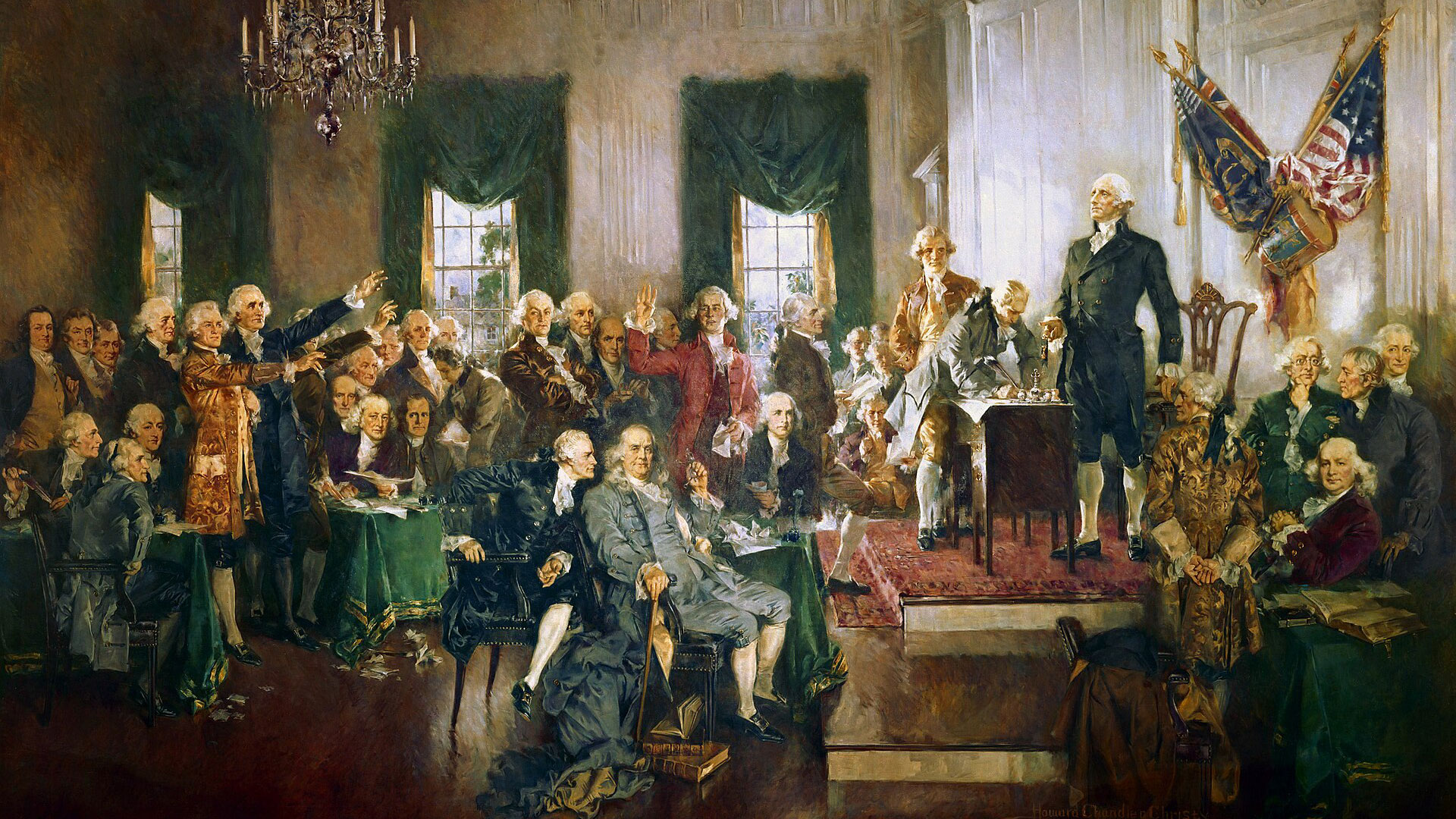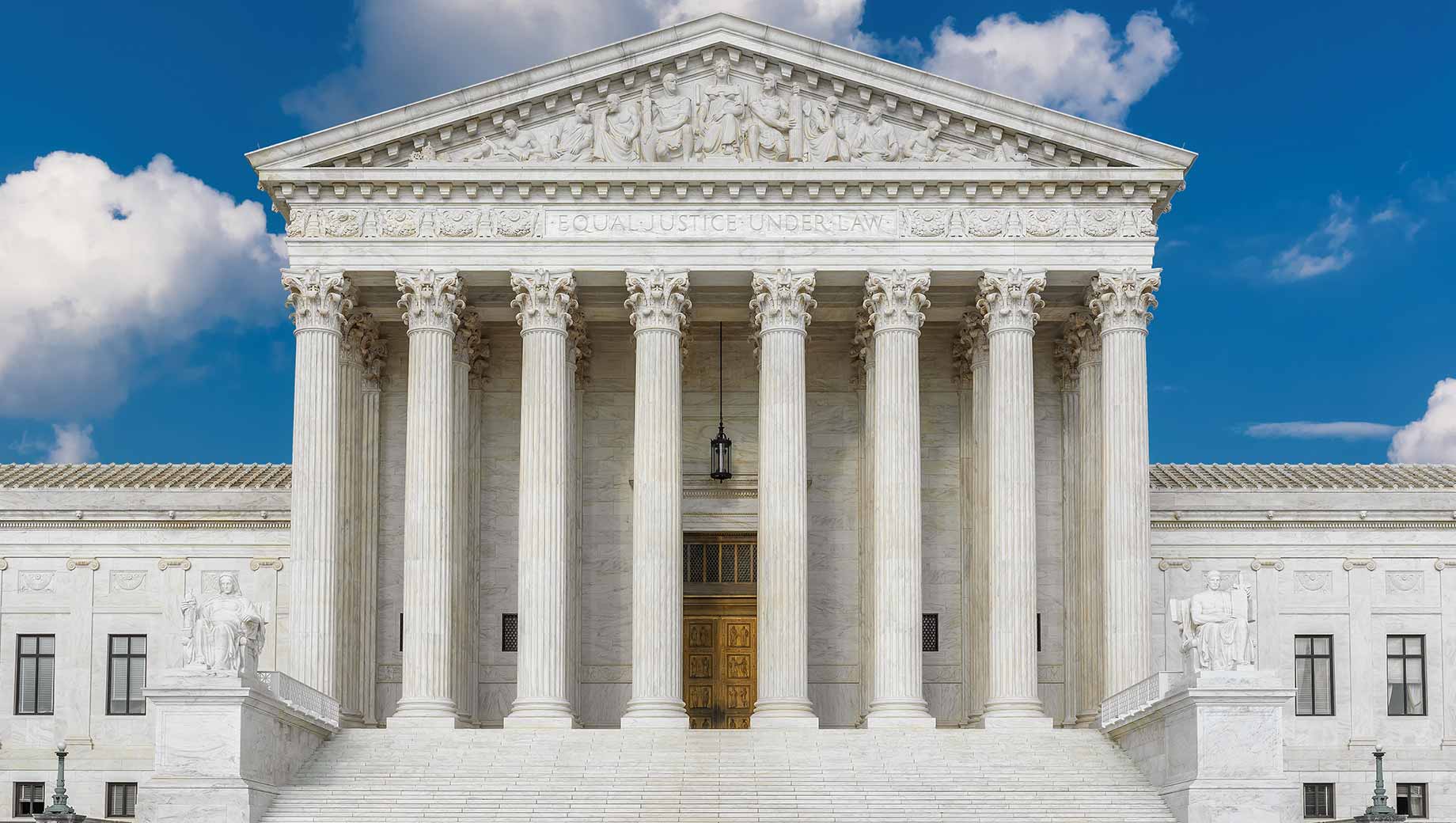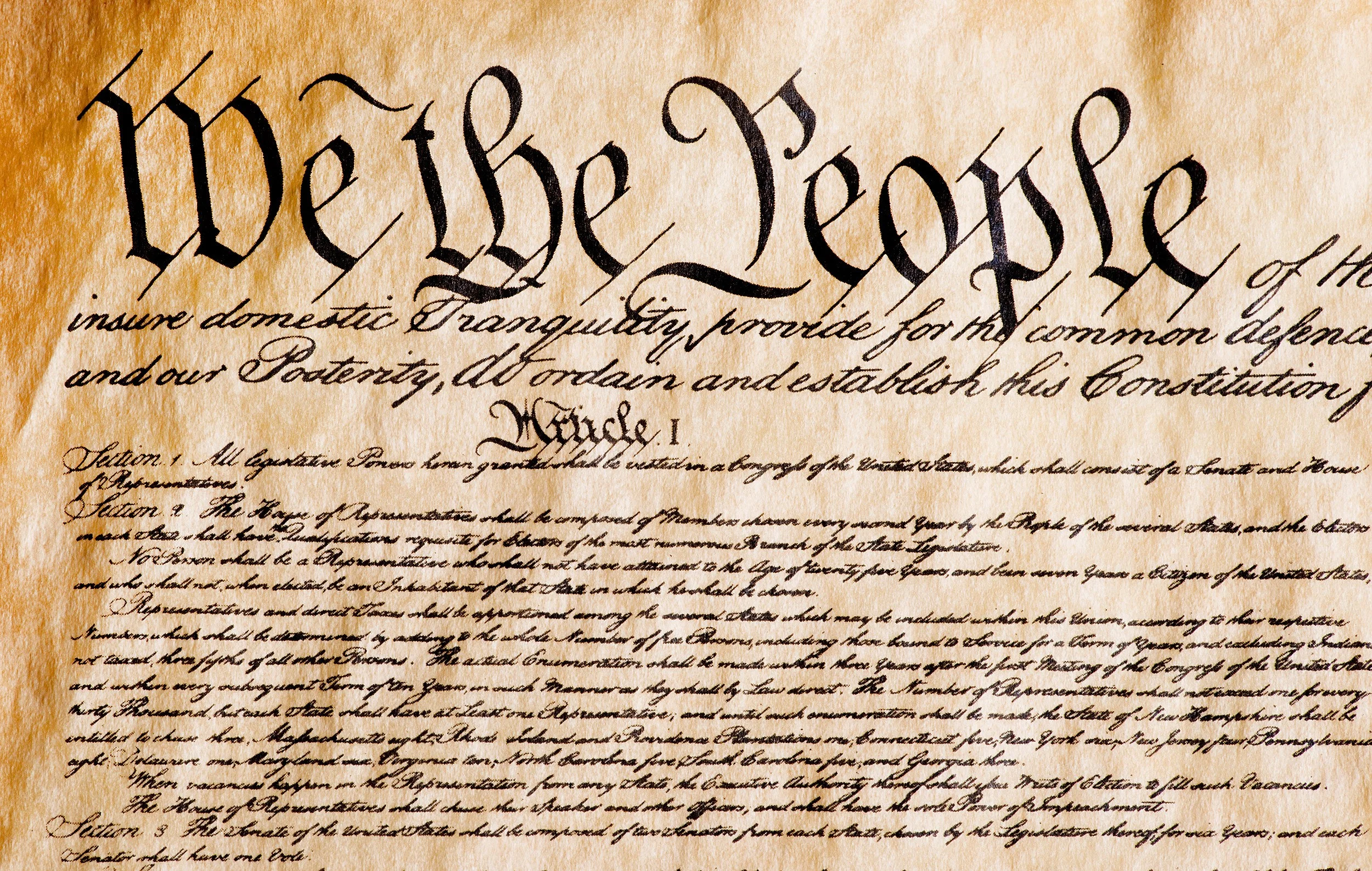By Dimitris Kouvaras,
Even if many of you are unfamiliar with American politics, I am confident that there are certain references, however scattered, that could nonetheless ring a bell. Take for example the infamous phrase “I plead the fifth” (i.e. the Fifth Amendment, for those unacquainted with the wording), which some of you might recognise if you like police series, or the contentious case of Dobbs’ overturning Roe, which shattered the comprehensive protection of abortion in the United States in 2022 and dominated headlines worldwide. More recently, one can point to this month’s decision of the Supreme Court in the Colorado case that America’s favourite villain, Trump, cannot be removed from the ballot despite the traumatic havoc of January 6. What all these -hopefully somewhat familiar- references have in common is their own mutual reference to the same document: the United States’ Constitution, which, along with its institutional arbiter, the Supreme Court, comprise this article’s topic.
The Constitution reigns supreme in American political culture to an extent unparalleled by any of its counterparts worldwide. It is revered as the holy grail of the Republic, the cornerstone of American identity and particularity with which everyone’s national sentiment resonates, be they congressmen or simple citizens. “We The People” dominates the preamble, written in giant gothic calligraphy, asserting its democratic origin and its representative, unanimous character. Warren Harding, a Republican president of the early interwar period, maintained that it was divinely inspired in 1921. Since, its sheets of parchment are prominently displayed in a shrine-like building at the National Archives, along with the Declaration of Independence and the Bill of Rights, in a way similar to the display of a famous art piece, like the Mona Lisa. Pocket constitutions are ample in the US, not least among politicians who tend to carry them around to purport their learnedness of the fundamental American principles, which they often see violated by their opponents, and therefore assume their defense. Arguably, these are impressive impacts for a text only 4.400 words long, excluding the amendments.
Most people proclaim they know the Constitution, but few have read it as a whole. Further still, it could be maintained that those who revere it the most know it the least, rather than sticking to the myths of pop culture and national narrative. If one digs a bit deeper into the history of the Constitution and its ratification, the glorious, consensual, and inclusive image pictured above breaks to pieces, for it was a highly contested, even displeasing, document from the very beginning. Benjamin Franklin, one of the masterminds of the Philadelphia Convention, started his delivered speech preceding the signature process with the following: “I confess that there are several parts of this constitution which I do not at present approve, but I am not sure I shall never approve them”. Nonetheless, he maintained that, given the circumstances, the document was meritorious and so urged the delegates to sign it. That is what the Constitution was all about: a solution to a pressing political problem, which was traded with the shortcomings inherent in the final product itself.
In the summer of 1787, when about 35 white men secretly met in Philadelphia to deliberate on what would become the Constitution of the United States, the confederation of thirteen recently independent colonies found itself in a precarious position. Despite the war being over, fear for the British remained, while the existing political framework of the Continental Congress and their Articles of Confederation proved too loose to efficiently run the Union, amidst conflicting interests. Most power was reserved for the states, making the implementation of consistent economic or foreign policy impossible. After a failed effort to draft a new foundational document the previous year, the Philadelphia scheme was set in motion. It was not disclosed until the Constitution was ready, after more than six months of drafting. Obviously, this was far from a representative process. Then, it was sent to Congress and forwarded to the states for ratification. In many of them, like New York, it was passed with a very short margin, while in Rhode Island, the only state that held a popular referendum, it was dismissed, only to be accepted later. Overall, its unpopularity was evident throughout the ratification process, to the extent it triggered an entire persuasion campaign by James Madison and Alexander Hamilton to get the job done. In fact, the Bill of Rights was drafted by Madison in 1791 as a means of appeasing this dissent and preventing the Union from breaking down. Apparently, it was not just about democratic ideals.

The main issue was that the federal structure it established was far more centralised, and thus deemed authoritarian. Indeed, what the Constitution mainly does is charting the federal government’s power domain. However, it does so in a remarkably laconic and ambiguous manner, and so do the Amendments. This is explainable since a certain degree of ambiguity would be necessary for their acceptance, given the various interests that had to be compromised. Still, this has its price. On a relevant undertone, considering cases such as Dobbs, antifederalist William Manning proclaimed in 1798 that “The Federal Constitution” -which he deemed an utmost “inexplicit thing”- “is made like a Fiddle, with but few Strings, but so that the ruling Majority could play any tune upon it they please”. Given the scarcity of its content, most rulings about the Constitution rely on inferences, or interpretations, which, as Manning implies, can be politically or ideologically biased. How could they not be, in the absence of any “correct” interpretation method? Both originalism, the approach focusing on the historical context and the original intentions behind the Constitution, and living constitutionalism, focusing on adapting the core constitutional values to modern societal standards, have flaws. Why should the death penalty -an obviously cruel punishment- be upheld today just because it was not considered “cruel or unusual” in 1787? On the other hand, isn’t distancing from the original context somehow arbitrary in terms of legal basis? These are just some of the questions.
The modern controversies such as Dobbs and Colorado are the legacy of this history, that made the Constitution ambiguous and at the same time undeniably vital for the cohesion of the United States, while also difficult to amend. Since it would be inconceivable to ever change it, America is stuck with its undecipherable language. The Federal System, with conflicting tendencies among states, is another contributing factor to its central position, as it can be used to strike down state laws that are found to contradict it. Here comes the role of its arbiter, the Supreme Court, which shoulders this power of interpretation, since Chief Justice John Marshall’s pronouncement in the 1803 case of Marbury v. Madison (otherwise totally irrelevant to this process) that “It is emphatically the province and duty of the Judicial Department to say what the law is”. As you might have guessed, this self-proclaimed power is nowhere in the Constitution itself. Nonetheless, it is now as strong as never before, especially as the Court is more politicised than ever.

These are the historical paradoxes of the U.S. Constitution: a document that turned from unpopular to sacred-like; that is believed to represent “we the people” although it was written by 35 white men; that talks about the government’s power too much while saying too little; that shapes decisions on matters it doesn’t refer to, since no other alternative exists given the political and legal structure of the United States. When the next case makes the headlines, give all that a think.
References
- Erwin Chemerinsky. The Case Against the Supreme Court. Penguin Books. London. 2015.
- The Commandments. The New Yorker. Available here
- Michael Kammen. A Machine That Would Go of Itself: The Constitution in American Culture. Routledge. New York. 2017.




